Back in October, Intel introduced the 14th-gen Core desktop processor series, code-named Raptor Lake Refresh. The primary beneficiary of this refresh is the new Core i7-14700K which continues the trend of its predecessors, receiving a significant CPU core count boost with each generation. For context, the i7-11700K featured eight cores and 16 threads, followed by the i7-12700K with 8P+4E (12 cores/20 threads), and the i7-13700K with 8P+8E (16 cores/24 threads).
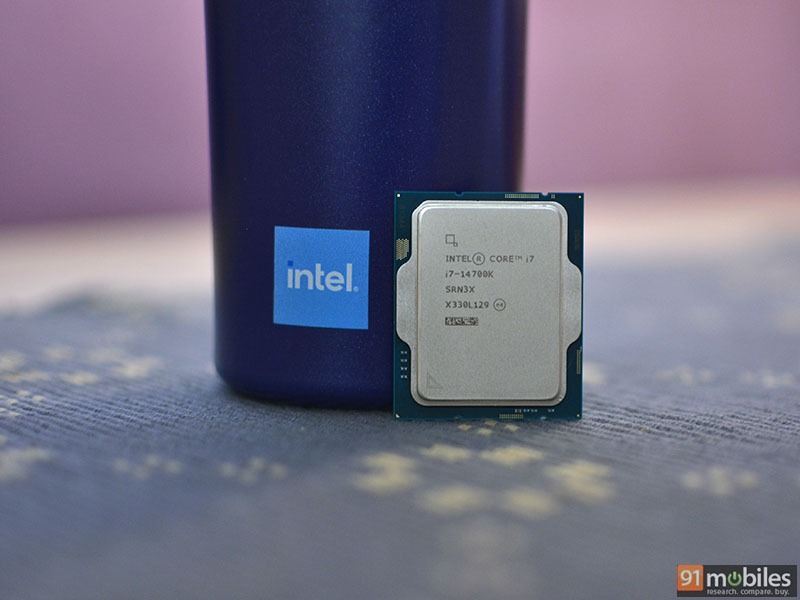
Price and availability
While Intel is yet to fully announce the 14th-gen desktop CPU lineup, the main three models including the Core i9-14900K, Core i7-14700K and the Core i5-14600K are readily available in all major markets around the world. If you are planning to upgrade or build a brand new system in India, the Core i7-14700K is going to cost you around Rs 40,000, which is similar to its predecessor. In fact, the Core i7-13700K continues to sell around the same price point in all major retail stores.
Pricing may vary, but I highly recommend going for a reliable PC store rather than Amazon where the CPU is selling for over Rs 49,000 which is a significant price difference. I have seen prices for the 14700K go down as low as Rs 39,899, so do keep that in mind.
Specifications
As mentioned in the intro, the new 14th-gen is primarily a Raptor Lake refresh, meaning that it utilises the same design and process as the previous generation. In fact, the Core i9-14900K and the Core i5-14600K both have the same core and thread count as the Core i9-13900K and the Core i5-13600k respectively. The only difference is the changes in clock speeds.
| Intel Core i7-14700K | Intel Core i7-13700K | |
| Architecture | Raptor Lake | Raptor Lake |
| TDP | 125W | 125W |
| Socket | LGA1700 | LGA1700 |
| Manufacturing process | Intel 7nm | Intel 7nm |
| Core count | 20 (8 P-cores + 12 E-cores) | 16 (8 P-cores + 8 E-cores) |
| Threads | 24 | 28 |
| L3 Cache | 33MB | 30MB |
| Base clock | 3.4GHz | 3.4GHz |
| Boost clock | Up to 5.6GHz | Up to 5.4GHz |
| Memory support | DDR5 5,600MHz/DDR4 3,200MHz | DDR5 5,600MHz/DDR4 3,200MHz |
| Graphics | Intel UHD Graphics 770 | Intel UHD Graphics 770 |
The Core i7-14700K, however, is the only CPU that sees a significant update when compared to last-generation’s Core i7-13700K. Intel has increased the E-core (Efficiency core) count to 12, as opposed to eight, resulting in a total of 8P+12E core as well as an increased thread count of 28. Beyond the augmentation in E-cores, Intel has implemented a 200MHz boost to P-core turbo clock speeds, allowing the P-core turbo clock speeds reaching up to 5.6GHz and a base P-core frequency of 3.4GHz. The increased core count also means more L3 cache of 33MB.
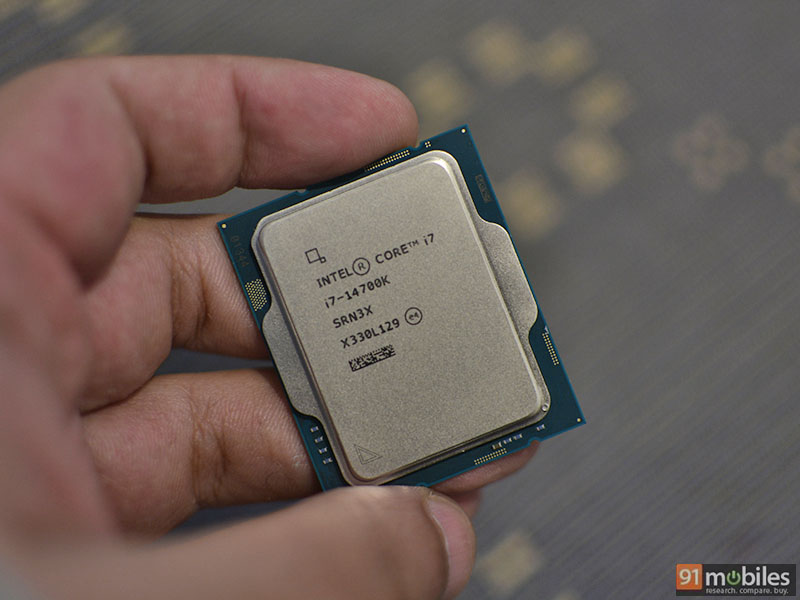
Additionally the CPU comes with a maximum TDP (PL1 and PL2 states) of 253W, which might sound similar to the 13700K, but as you will see in my testing, it went way beyond that. As for memory, it supports DDR5 5600MT/s but you can also use DDR4 memory up 3200MT/s. That’s because the new 14th-gen comes with the same LGA1700 socket design, hence it can be used with all boards that support the previous 12th-gen and 13th-gen CPUs. Lastly, there is support for PCIe Gen 5 as well as Wi-Fi 7. Intel also suggests that the new 14th-gen series will support a new AI-based overclocking feature via the company’s Extreme Tuning Utility (XTU), although it currently only works for the Core i9-14900K.
Test bench
Rather than using a full-size tower, I tested the Core i7-14700K in a smaller m-ATX chassis, more specifically the DeepCool CH370. The case offers plenty of airflow, and is surprisingly affordable for the features it offers. For the motherboard I have used the Gigabyte Z790M Aorus Elite, with 32GB of DDR5-6000 Trident Z5 memory from G.Skill.
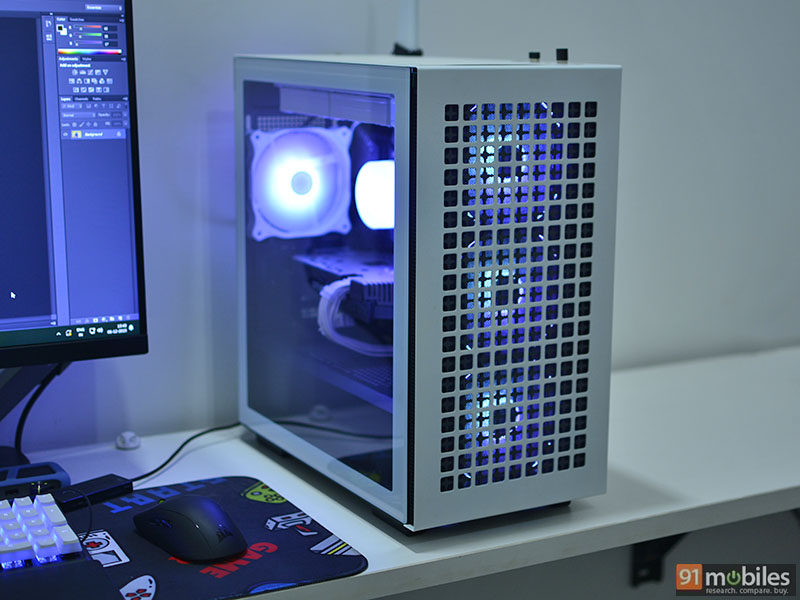
For storage I wanted to use a fast PCIe Gen 5 SSD, but since the motherboard only supports Gen 4, I went with the Seagate Firecuda 530 that supports transfer speeds up to 7000MBps. The power supply is an 850W ASUS ROG Strix unit with 80 Plus Gold rating, and for the GPU I’ve gone for my modest Nvidia GeForce GTX 1660 Super from Zotac. Lastly, the CPU is cooled using the new Lian Li Galahad II Trinity 240mm AiO liquid cooler along with four additional 120mm case fans (three at the front and one at the back).
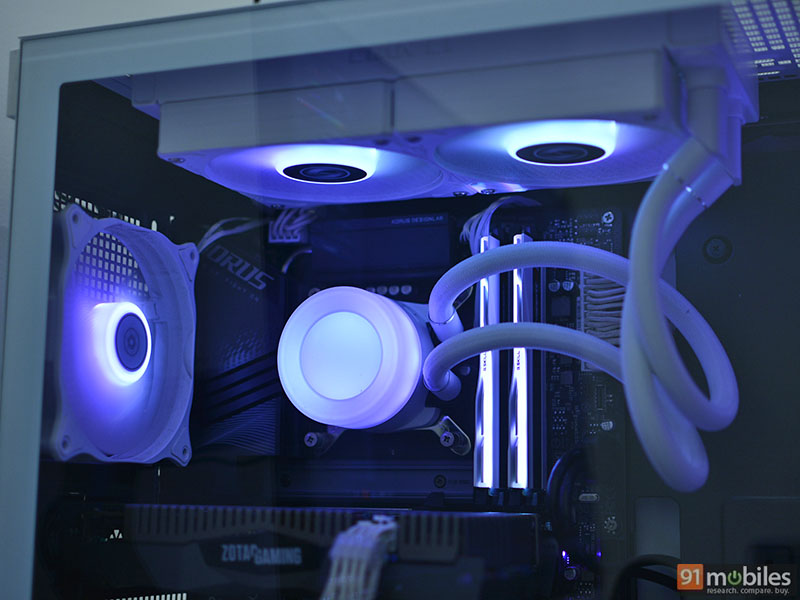
Power and thermals
In the course of my testing I found the chip to be quite stable, so you don’t really need to worry, although like most of Intel’s high-end chips this one doe not come with a cooler. Hence it is best that you invest in a beefy CPU cooler, which is going to increase the overall cost of your build. I highly recommend a 360mm AiO liquid cooler, but you can get away with a smaller radiator provided it has an efficient pump. If you are planning for an air cooled build, I would recommend going for a high-quality option from Noctua, DeepCool or Cooler Master. Just maake sure they have the capability of handling over 250W.
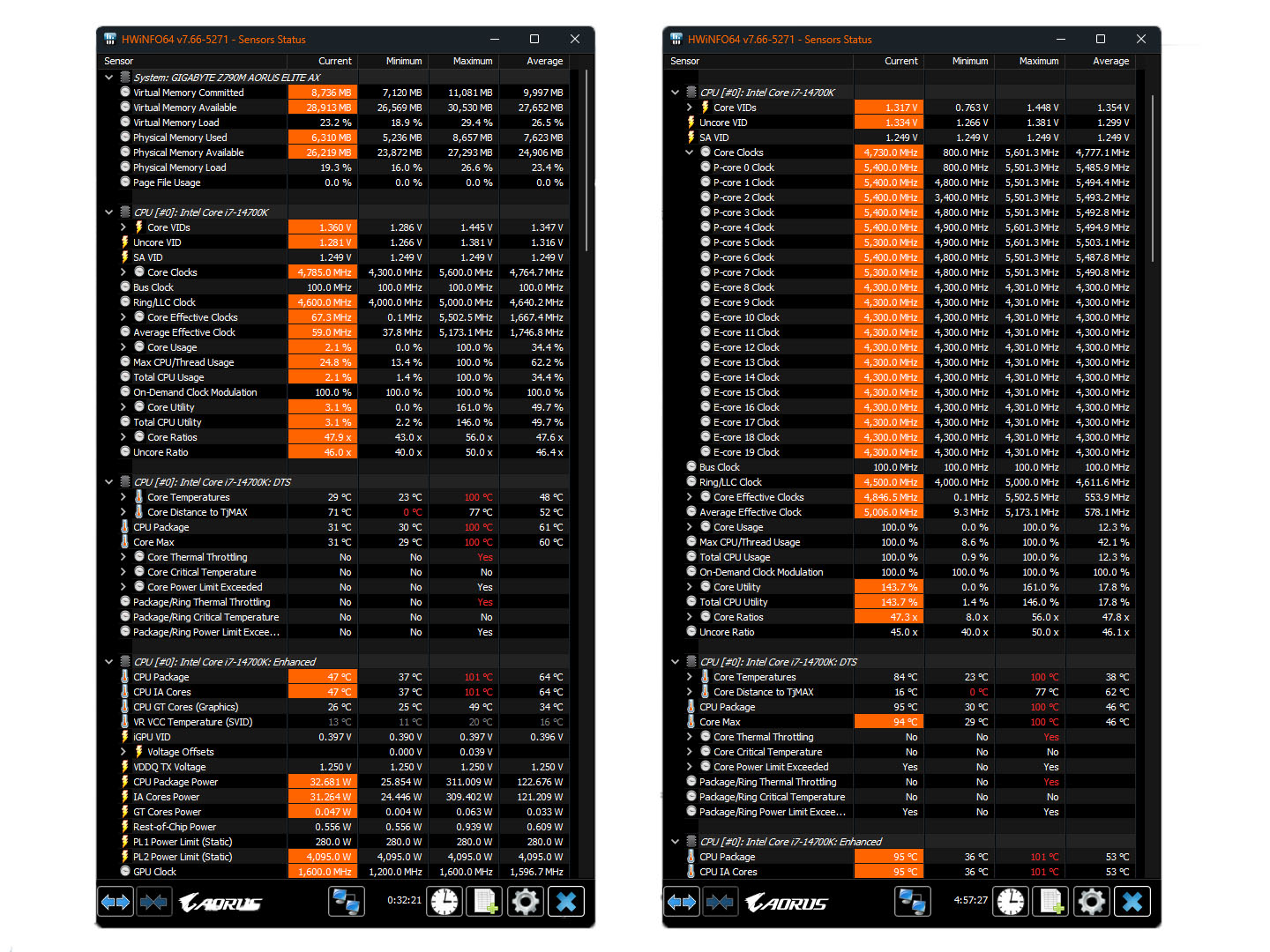
Stressing the CPU pushes the temperatures going up to 100°C, but eventually settles down in the high 80°C and 90°C. You may face thermal throttling if you don’t have a capable CPU cooler, but that shouldn’t really affect the overall performance of the chip in day to day usage.
Benchmark testing
Let’s get down to business. To get a theoretical idea of how well the Core i7-14700K performs, I ran a few benchmark tests to get a numerical value for comparison. Starting off with Cinebench R23, I ran the tests for 10 minutes each which resulted in a multi-core score of 33,797 points while the single-core benchmark scored 2,067 points. Moving on the 7-Zip compression and de-compression benchmark, the CPU managed to deliver a total rating of 1,78,574 MIPS (million instruction per second) with 1,63,294 MIPS in compression and 1,93,855 MIPS in decompression.
Moving to the PCMark 10’s Extended CPU benchmark, which is a complete system test for all types of Windows PC. It includes all workloads from all four test groups to give you a comprehensive view of a system’s performance. The Core i7-14700K managed an overall score of 10,072 points. Additionally, I ran JetStream 2, GeekBench 6 and CrossMark to evaluate the performance of the CPU.
| BENCHMARK | SCORE |
| Cinebench R23 multi-core | 33,797 |
| Cinebench R23 single-core | 2,067 |
| PCMark 10 Extended | 10,072 |
| 7-Zip | 1,78,574 MIPS (million instruction per second) |
| JetStream 2 | 394.821 |
| Geekbench 6 multi-core | 19,865 |
| Geekbench 6 single-core | 2,883 |
| CrossMark | 2,552 |
To get a better idea as to how much improvement the new Core i7-14700K brings to the table, I compared the benchmark results with the previous gen Core i7-13700K. Essentially you are getting an average improvement of 8.77 percent over the previous generation. A dedicated piece on the comparison is also in the works, so don’t forget to check that out.
Final thoughts
Intel’s Raptor Lake Refresh has received mixed reviews, but the Core i7-14700K stands out with substantial improvements. Unlike its counterparts, this processor delivers noticeable enhancements without a significant price increase or the need for a new platform, showcasing a successful execution of the Raptor Lake Refresh by Intel.
For users with systems predating the Intel 12th Gen processor, upgrading to the Core i7-14700K offers a substantial performance boost, albeit requiring a new motherboard. Of course, you are going to need top of the line hardware to get the maximum performance out of the chip. However, those primarily focused on gaming with an 11th-gen Intel processor or a later AMD AM4 processor may consider holding off for more significant improvements in the next generation. From a non-gaming perspective, upgrading now can be justified due to substantial gains in various workloads.
Strictly speaking of the current LGA 1700 system, the Core i7-14700K is a sensible upgrade, especially if transitioning from a 12th-gen or 13th-gen Core i3 or a 12th Gen Core i5 like the Intel Core i5-12600K. While gaming performance may not see a significant impact, the extra cores prove valuable for multitasking and resource-intensive tasks. Users with processors higher than a 12th-gen Intel Core i5 may want to wait for the next line of Intel chips before considering an upgrade.
Editor’s rating: 8.5 / 10
Pros:
- Same price as previous-gen Core i7
- Increased core and thread count
- Solid and stable performance
- Uses same LGA 1700 socket
- Support for DDR5 and DDR4
Cons:
- Minor improvements over 13th-gen
- Requires heavy-duty cooler
- Consumes a lot of power
The post Intel Core i7-14700K review: worthy of the Raptor Lake “Refresh” moniker first appeared on 91mobiles.com.
0 Comments